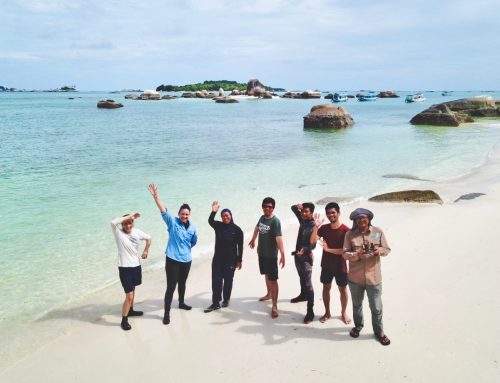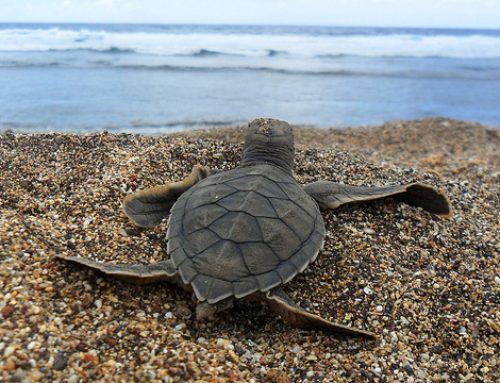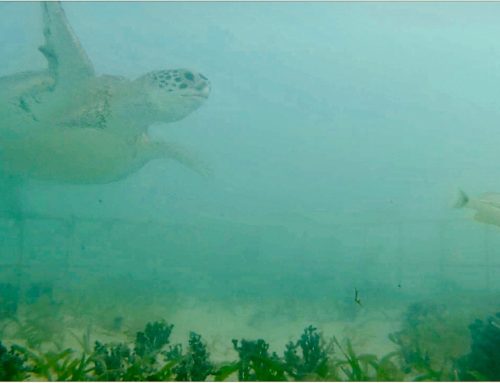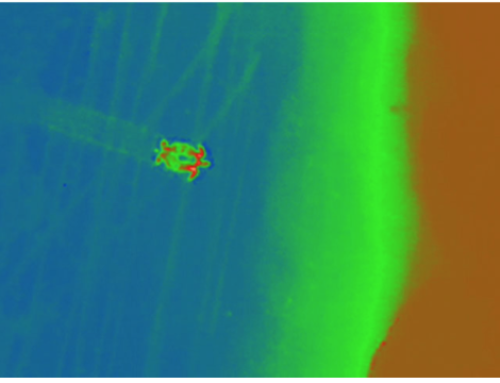In the first week at Derawan I saw so many turtles, therefore a post about the “production of new turtles”. Yesterday night I saw 4 turtles (Chelonia mydas) crawling on the beach to search for a suitable site to lay their eggs above the high tide line.
She digged out a large hole in the surface of the beach using a swimming movement of her front flippers, creating the “body pit”. After ten minutes or more, actively throwing sand behind her, she beginned digging with her hind limbs, excavating the egg chamber of about 60 cm deep. Without pausing she continued laying 90 ‘ping-pong-sized-eggs’ (While the eggs are being deposited into the egg chamber, they can tolerate bouncing, rolling, tumbling or handling, but about two hours after being laid, the embryo will resume development, and may be killed by a simple roll of the egg.) Ferry from the WWF digged up the eggs to protect them from poachers. Now we have to wait 45-70 days for the small Tukik (turtle hatchling in Bahasa Indonesia) to hatch. Higher temperatures produce more females and result in shorter incubation periods. At Derawan Ferry will check development of the nests so that he can digg the eggs out and release the small flippering friends before poachers or predators find them.
After nesting, the female went back to the coral reef to rest and complete the next clutch of eggs. They are known to mainly rely on their stored fat reserved while resting and completing the next clutch of eggs. She can lay several clutches of eggs at approximately two-week intervals before finally migrating back to her feeding ground. We are still in doubt if the mother turtles are the same ones grazing on the seagrass fields in front of Derawan at daytime, or if they only visit this Island to lay their eggs and travel back to their feeding ground.






Leave A Comment